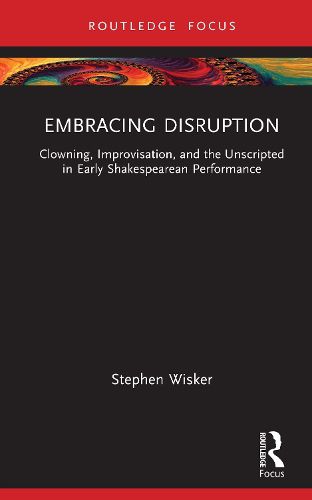Readings Newsletter
Become a Readings Member to make your shopping experience even easier.
Sign in or sign up for free!
You’re not far away from qualifying for FREE standard shipping within Australia
You’ve qualified for FREE standard shipping within Australia
The cart is loading…






This volume celebrates the centrality of clowning to Shakespeare's conception of theatre and how he purposefully invites the clown's anarchic energy into the heart of his dramaturgy.
Having evoked his comic inheritance in the person and practice of the great clown Dick Tarlton, the book examines Shakespeare's innovative deployment of his company clown Will Kemp alongside leading man Richard Burbage. In chapters on Romeo and Juliet and Henry IV, the book explores the enormously generative, unstable, and compelling relationship between these two actors, Burbage and Kemp-the hero and the clown-and how this extraordinary dynamic between them was experienced by the audience in performance. Subsequent chapters show the ghosts of both Tarlton and Kemp informing Burbage's performance as Hamlet and then Kemp's successor Robert Armin continuing this dynamic as the Fool alongside Burbage in King Lear. In each instance, the presence of the clown (or Hamlet's own clown-like behavior) radically informs the audience's understanding of the hero. Furthermore, the clown's increasingly sophisticated deployment and absorption into Shakespeare's plays comments on and resists the transformation of the Elizabethan theatre.
This study will be of great interest to students and scholars in Performance studies and Shakespeare studies.
$9.00 standard shipping within Australia
FREE standard shipping within Australia for orders over $100.00
Express & International shipping calculated at checkout
This volume celebrates the centrality of clowning to Shakespeare's conception of theatre and how he purposefully invites the clown's anarchic energy into the heart of his dramaturgy.
Having evoked his comic inheritance in the person and practice of the great clown Dick Tarlton, the book examines Shakespeare's innovative deployment of his company clown Will Kemp alongside leading man Richard Burbage. In chapters on Romeo and Juliet and Henry IV, the book explores the enormously generative, unstable, and compelling relationship between these two actors, Burbage and Kemp-the hero and the clown-and how this extraordinary dynamic between them was experienced by the audience in performance. Subsequent chapters show the ghosts of both Tarlton and Kemp informing Burbage's performance as Hamlet and then Kemp's successor Robert Armin continuing this dynamic as the Fool alongside Burbage in King Lear. In each instance, the presence of the clown (or Hamlet's own clown-like behavior) radically informs the audience's understanding of the hero. Furthermore, the clown's increasingly sophisticated deployment and absorption into Shakespeare's plays comments on and resists the transformation of the Elizabethan theatre.
This study will be of great interest to students and scholars in Performance studies and Shakespeare studies.